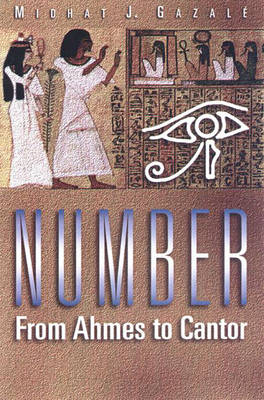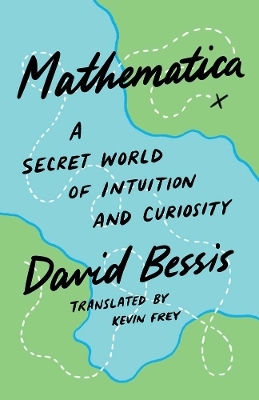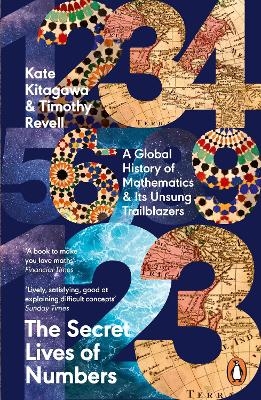
Number
Princeton University Press (Verlag)
978-0-691-00515-7 (ISBN)
- Titel ist leider vergriffen;
keine Neuauflage - Artikel merken
We might take numbers and counting for granted, but we shouldn't. Our number literacy rests upon centuries of human effort, punctuated here and there by strokes of genius. In his successor and companion volume to Gnomon: From Pharaohs to Fractals, Midhat Gazale takes us on a journey from the ancient worlds of the Egyptians, the Mesopotamians, the Mayas, the Greeks, the Hindus, up to the Arab invasion of Europe and the Renaissance. Our guide introduces us to some of the most fascinating and ingenious characters in mathematical history, from Ahmes the Egyptian scribe (whose efforts helped preserve some of the mathematical secrets of the architects of the pyramids) through the modern era of Georg Cantor (the great nineteenth-century inventor of transfinite numbers). As he deftly blends together history, mathematics, and even some computer science in his characteristically compelling style, we discover the fundamental notions underlying the acquisition and recording of "number," and what "number" truly means. Gazale tackles questions that will stimulate math enthusiasts in a highly accessible and inviting manner. What is a natural number?
Are the decimal and binary systems the only legitimate ones? Did the Pythagorean theorem and the discovery of the unspeakable irrationals cost the unfortunate mathematician Hippasus his life? What was the Ladder of Theodorus of Cyrene and how did the ancient Greeks calculate square roots with such extraordinary proficiency? An original generalization of Euler's theorem is offered that explains the pattern of rational number representations. Later on, the field of Continued Fractions paves the way for another original contribution by Gazale, that of cleavages, which sheds light on the mysterious nature of irrational numbers as it beautifully illustrates Dedekind's famous Schnitt. In the end the author introduces us to the Hilbert Hotel with its infinite number of rooms, guests, and an infinite number of people waiting to check in, where he sets the debate between Aristotle and Cantor about the true nature of infinity. This abundantly illustrated book, remarkable for its coherency and simplicity, will fascinate all those who have an interest in the world of numbers.
Number will be indispensable for all those who enjoy mathematical recreations and puzzles, and for those who delight in numeracy.
Midhat Gazalé is an international telecommunications and space consultant and Visiting Professor of Telecommunications and Computer Management at the University of Paris IX. He has served as President of AT&T-France, as Chairman of the Board for Sperry-France and for International Computers-France, and as an executive and research scientist for other major companies. He was made Chevalier dans l'Ordre National du Mérite in 1981.
Preface xi INTRODUCTION 3 CHAPTER 1 The Genesis of Number Systems 9 Foundations 9 Matching 10 Naming 11 Counting 12 Grouping 15 Archaic Number Systems 16 The Egyptians 17 The Mesopotamians 28 The Greeks 34 The Mayas 38 Two Current Number Systems 41 The Hindus 42 The Arabs 43 The Decimal Number System 45 Fractional Numbers 50 Uttering versus writing 52 Units 54 The Binary Number System 55 CHAPTER 2 Positional Number Systems 59 The Division Algorithm 59 Codes 61 Mixed-Base Positional Systems 64 Finding the Digits of an Integer 69 Addition 72 Uniform-Base Multiplication 75 Mixed-Base Multiplication 77 Construction 1: A Parallel Adder 78 Construction 2: A Digital-to-Analog Converter 80 Construction 3: A Reversible Binary-to-Analog Converter 80 Positional Representation of Fractional Numbers 82 Going to Infinity 89 How Precise Is a Mantissa? 93 Finding the Digits of a Fractional Number 96 Finding the Digits of a Real Number 98 Periodic Bases 99 A Triadic (Ternary) Yardstick 102 Marginalia 103 Unit Fractions Revisited 103 Appendix 2.1 105 Appendix 2.2 106 CHAPTER 3 Divisibility and Number Systems 107 The Fundamental Theorem of Arithmetic 107 Congruences 109 Pascal's Divisibility Test 111 Euler's Function and Theorem 114 Eulers Theorem 116 Exponents 118 Primitive Roots 120 A Generalization of Eulers Theorem 123 The Residue Sequence 124 Indices 126 Conjugates and Conformable Multiples 128 Positional Representation of Rational Numbers 131 Mixed Bases 134 Bases 2 and 10 137 Cyclic Numbers 140 Strings of Ones and Zeros 144 Marginalia 146 Mersenne Primes 146 On Dirichlets Distribution Principle 149 Appendix 150 Carmichael's Variation on Eulers Theorem 150 CHAPTER 4 Real Numbers 152 Rational Numbers 154 The Integral Domain 154 The Rational Numbers Field 155 Marginalia: On the Axiomatic Method 58 Commensurability 160 Irrational Numbers 162 Pythagoras's Theorem 162 Pythagorean Triples 164 The Plimpton 322 Tablet 167 The Ladder of Theodorus of Cyrene and Diophantine Equations 169 A Variation on the Ladder of Theodorus 171 Fermat's Last Theorem 172 The Irrationality of /2 173 A (Theoretically) Physical Impossibility 175 Dedekind 176 Eudoxus 178 Marginalia 182 Three Ancient Problems 182 Appendix 183 Proof of the Irrationality of e 183 CHAPTER 5 Continued Fractions 185 Euclid's Algorithm 185 Continued Fractions 187 Regular Continued Fractions 189 Convergents 190 Terminating Regular Continued Fractions191 Periodic Regular Continued Fractions 192 Spectra of Surds 194 Nonperiodic, Nonterminating Regular Continued Fractions 196 Two Celebrated Irregular Continued Fractions 197 Appendix 197 CHAPTER 6 Cleavages 199 The Number Lattice 200 Prime Nodes 202 Cleavages 203 Coherencc 211 A Definition of Real Numbers 215 Some Properties of Fractions 216 Contiguous Fractions 219 The Mediant 222 Affine Transformations 224 The Stern-Brocot Tree 226 Pencils and Ladders 229 Cleavages and Continued Fractions 233 Klein's Construction 238 The Greatest Common Divisor Revisited 239 Marginalia 242 Cleavages and Positional Number Systems242 Cleavages and Automata 246 Cleaving Crystals 248 Cleavages and Replicative Functions 249 Gaussian Primes 250 Appendix 6.1 252 Proof of Test (6.7) 252 Appendix 6.2 254 The Increment Sequence 254 CHAPTER 7 Infinity 257 Convergence 257 Paradoxes of Infinite Series 261 Further Paradoxes of Infinity 265 You Are Always Welcome at the Hilbert Hotel 268 Zeno's Paradoxes 269 Horror Infiniti? 270 Potential versus Actual Infinity 274 Cantor 275 The Power of the Continuum 278 Geometrical Metaphors 279 Transfinite Cardinal Numbers 281 Cantor Dust 281 Beyond Aleph 1 282 Postscript: The Balance Is Improbable but the Night Sky Is Black 285 Subject Index 287 Name Index 295
| Erscheint lt. Verlag | 13.3.2000 |
|---|---|
| Zusatzinfo | 41 tables, 10 color illustrations, 9 halftones, 98 line drawings |
| Verlagsort | New Jersey |
| Sprache | englisch |
| Maße | 197 x 254 mm |
| Gewicht | 624 g |
| Themenwelt | Mathematik / Informatik ► Mathematik ► Geschichte der Mathematik |
| ISBN-10 | 0-691-00515-X / 069100515X |
| ISBN-13 | 978-0-691-00515-7 / 9780691005157 |
| Zustand | Neuware |
| Haben Sie eine Frage zum Produkt? |
aus dem Bereich


